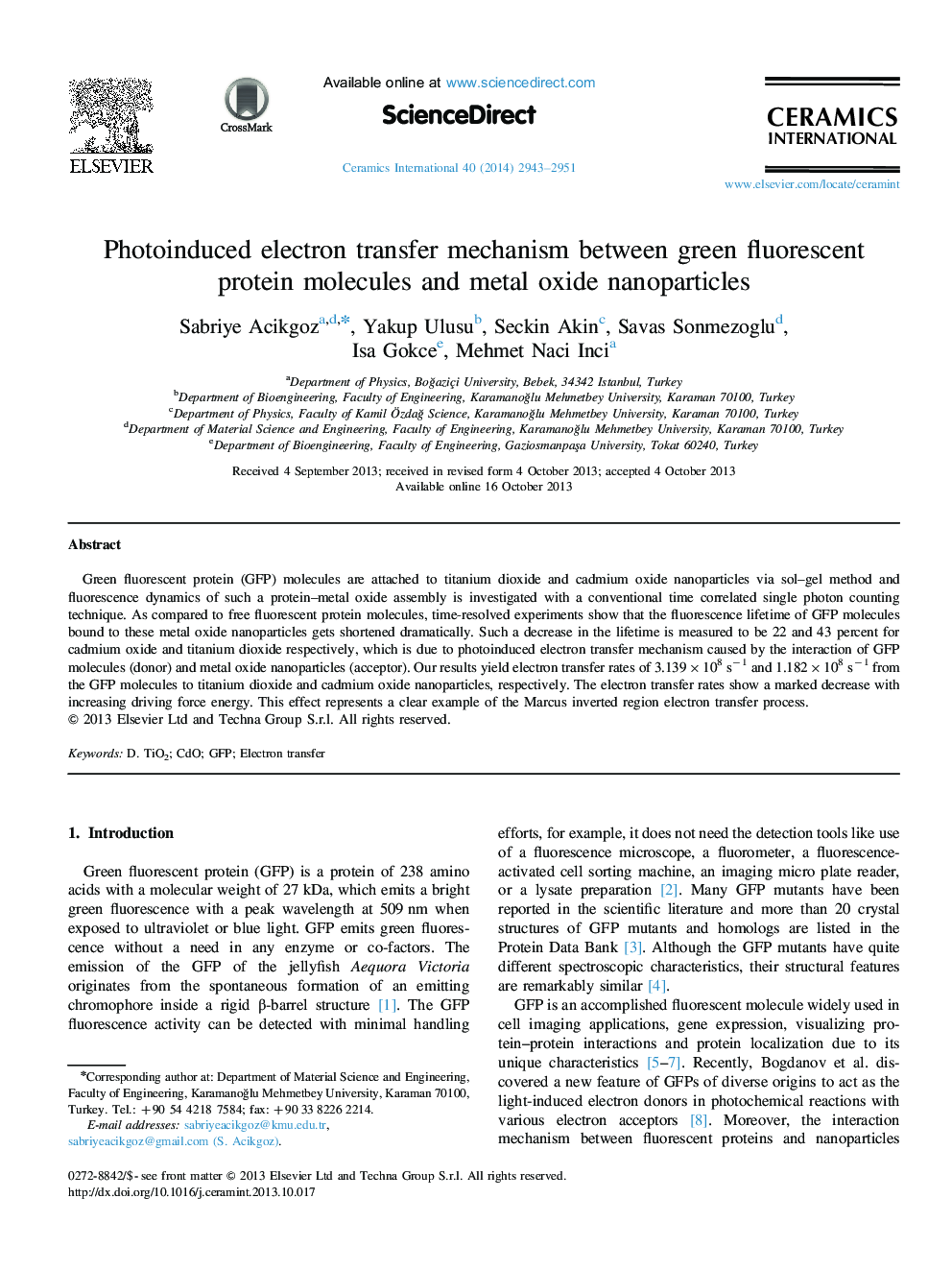| Article ID | Journal | Published Year | Pages | File Type |
|---|---|---|---|---|
| 1461343 | Ceramics International | 2014 | 9 Pages |
Green fluorescent protein (GFP) molecules are attached to titanium dioxide and cadmium oxide nanoparticles via sol–gel method and fluorescence dynamics of such a protein–metal oxide assembly is investigated with a conventional time correlated single photon counting technique. As compared to free fluorescent protein molecules, time-resolved experiments show that the fluorescence lifetime of GFP molecules bound to these metal oxide nanoparticles gets shortened dramatically. Such a decrease in the lifetime is measured to be 22 and 43 percent for cadmium oxide and titanium dioxide respectively, which is due to photoinduced electron transfer mechanism caused by the interaction of GFP molecules (donor) and metal oxide nanoparticles (acceptor). Our results yield electron transfer rates of 3.139×108 s−1 and 1.182×108 s−1 from the GFP molecules to titanium dioxide and cadmium oxide nanoparticles, respectively. The electron transfer rates show a marked decrease with increasing driving force energy. This effect represents a clear example of the Marcus inverted region electron transfer process.
